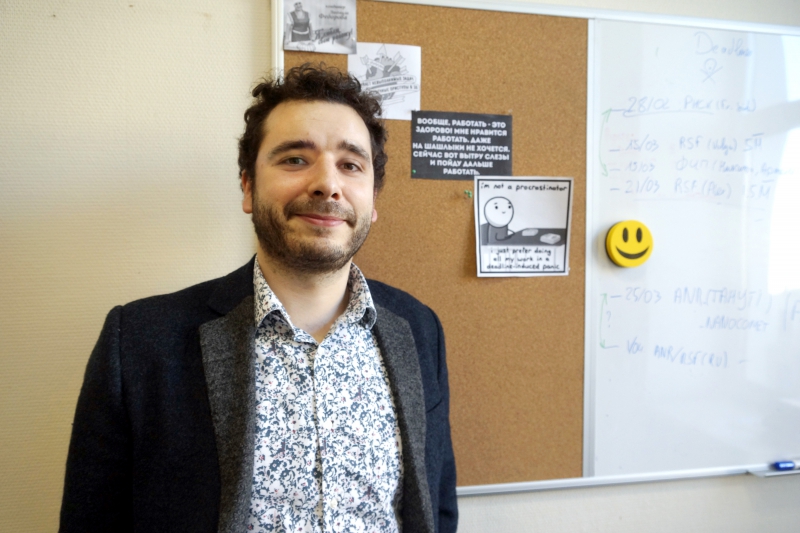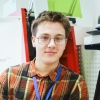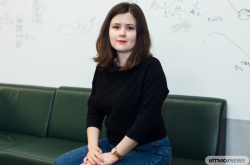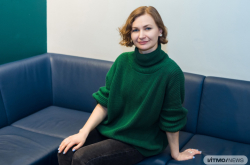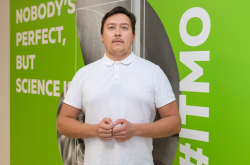What can you tell us about your research?
My research mostly has to do with metallurgy at the nanoscale. People have worked with metals for millennia, and we have acquired quite a lot of knowledge about the ways to manipulate metals and create alloys, and also to specifically create materials with certain properties. However, in the last decades, there has been a lot of interest towards going to the nanoscale, which introduces a lot of applications in electronics, medicine, and catalysis, which is used in the research of renewable energy. I myself am not directly involved in such projects, but I have many great colleagues who are. My background is in materials science, so my job is mostly to downscale the processes of synthesizing new metals. Steel-making plants are enormously huge, and, unfortunately, simply making them smaller won’t help you make metals at the nanoscale; instead, you need to change the entire process.
A lot of my work is fundamental; I work on complex materials for optics. When we say “complex materials”, we might mean that their atomic composition has specific features or, for example, that they are combined with certain organic chains, which is basically creating a hybrid material.
What are the practical applications of these materials?
There are downscaled properties of the metals, like nanoroughness, nanohardness, etc., and there is a lot of research focused on applying these properties in solutions for some large-scale problems, for example, in mechanics. However, we mostly work on other scales. For instance, if you were to look at the screen of your smartphone, there are layers there, such as the conductive layer, that are only several nanometers thick and yet they completely change the properties of your screen. Similar to those, there are applications for anti-reflective coatings, hydrophilic and hydrophobic coatings, and all of them only require several nanometers of thickness to work. These are called functional materials and their surface is their most important feature.
Another interesting area of application for such materials is in interdisciplinary physics-medicine research, where, for instance, they can be used to discover physical effects with possible uses in drug delivery.
Your research often has to do with plasma; what could you tell about its uses and how you use it in your work?
As I said, downscaling metallurgy requires a serious change of perspective. Instead of furnaces we mostly use plasma and lasers, which provides additional benefits: not only does it downscale the process, it also provides access to conditions that are hard or impossible to achieve in regular metallurgy. With plasma, you can reach temperature and pressure up to 3,000 Kelvin and 30 bars, while the process is conducted at room temperature with atmospheric pressure, which is interesting in itself, but what is even more interesting is the gradient of the temperature or the rate of its change. Plasma can cool at a rate of millions of degrees per second; with lasers, you can reach billions. This leads us to the extreme versions of tempering and quenching: in the Middle Ages, smiths would put red-hot swords straight into icy water to cool them at hundreds, maybe a thousand degrees per second. Imagine what we could do with the instruments that we have. Materials science is a fight between thermodynamics and kinetics, and our tools allow us to create wonderful things.
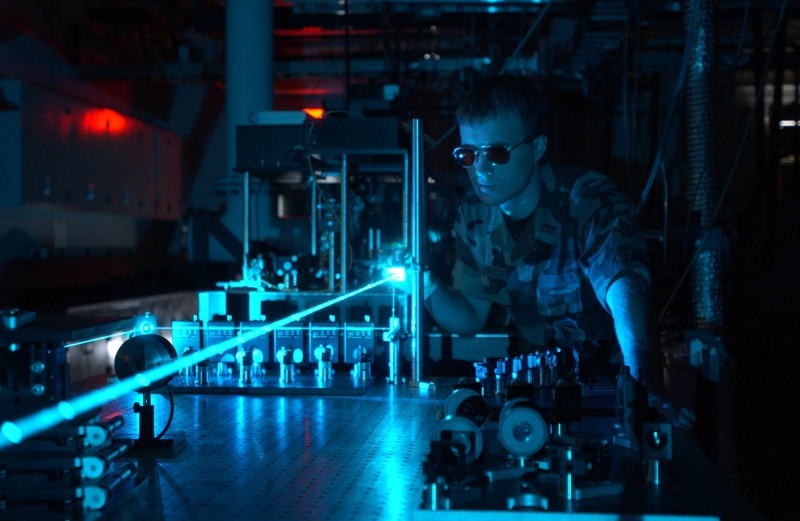
We are often working in the framework of optics to create new materials. Sometimes it involves creating brand new materials, like new oxides, and sometimes it’s just about downscaling existing materials because being able to synthesize materials at a scale below the wavelength of the visible radiation opens up new possibilities for researchers.
Your work also involves the synthesis of nanoparticles. Are you involved in their practical application, too? What are these applications?
It depends. Sometimes we just want to understand the difference between the bulk material and the nanoscale, and to compare what we know about them. Sometimes we specifically choose “simple” systems, like copper-silver and study them. I have recently found an archaeological paper about the use of copper-silver alloys as far as a couple of thousand years ago, so it is far from being new. But with lasers, we can change their structure and find new combinations in old technologies. That being said, copper-silver is actually a very interesting alloy: it has certain plasmonic properties, meaning that it influences the scattering of light, which is sometimes used in certain detection mechanisms.
Other interesting systems are semiconductors, for example. You can create so called “nanoheaters”: if you irradiate such nanoparticles with an infrared laser, they can transform this light flux into a heat flux very efficiently. This can be used in biology or in catalysis to produce some interesting localized effects. Another project involves the mixing of silicon and gold, which opens up a possibility of converting infrared light into broadband white light. This can be used as a sort of a probe: you can locally illuminate something with infrared light and detect the probe using a white light detector.
What did you enjoy the most out of all your research?
I think it was a paper that I submitted to Physical Review Applied. My co-authors and I were creating coatings for aluminum and magnesium to make their surfaces very hard. We used a technique that was actually invented here in St. Petersburg more than a century ago. It consists of forming oxides on their surface that reinforces them. For instance, aluminum oxides are harder than stainless steel, even though aluminum and magnesium themselves are very soft. So, in our paper, we studied the approach based on plasmas in liquid for this problem and we have managed to find and describe two types of plasma, one of which is bad for the process and one of which is good for the process, and how we can control their presence.
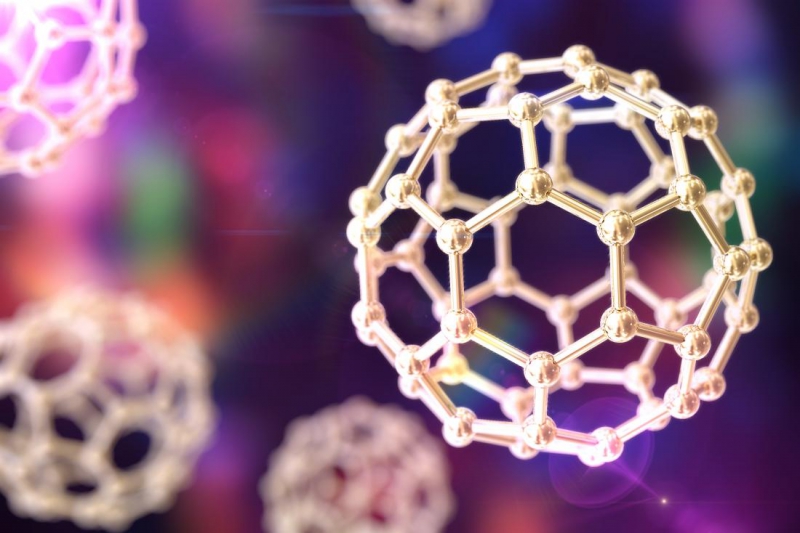
You have been to Russia before when you worked at MISIS in Moscow. How did you get there and how was your experience?
In the 90s, several researchers established a new program between Spain, Germany, Sweden, and France. MISIS also joined that group later on. The concept of that curriculum was that you would spend a certain amount of time studying at home and go abroad later. I spent 3.5 years in Nancy, France, my hometown, and then I had the opportunity to choose between Germany, Sweden, and Spain; I chose Spain and spent six months in Barcelona. After that, I had to make a choice again, this time between those three and also Japan, Brazil, and Russia. And since I learned Russian at school, I chose Russia. I spent 6 months in Moscow on a research internship, so instead of going to classes, I was working in the laboratory for the whole time. Actually, my first-ever paper was in the Russian Journal of Non-Ferrous Metals. Later, I returned there for another six months during my PhD studies.
Since you are here now, you can participate in a timeless debate: do you prefer Moscow or St. Petersburg?
I like St. Petersburg better. Moscow is the center of economic activity, so it is, therefore, a bit overcrowded. St. Petersburg, on the other hand, is more relaxed; here you can simply walk around, minding your own business. Plus, the atmosphere at ITMO is very friendly to foreigners, which makes it even better to stay here.
Still, the experience was positive in both cases, and, as I said, I returned to Moscow during my PhD.
How did you find ITMO University and how did you get here?
I found out about ITMO about two years ago. We started working together because there was a call for collaborative research from the French embassy in Russia. At that time I was just getting interested in metamaterials and plasmas and I was wondering who does metamaterials in Russia; the first site that I found was MetaLab’s. I researched their field of work and thought that it looked like an impressive place to work at.
When I came here, I wasn’t disappointed: I found a lot of motivated young people here. The atmosphere is very conducive for working because when you feel yourself and your research progressing and you are always in contact with other people with a lot of ideas, it just makes everything better.
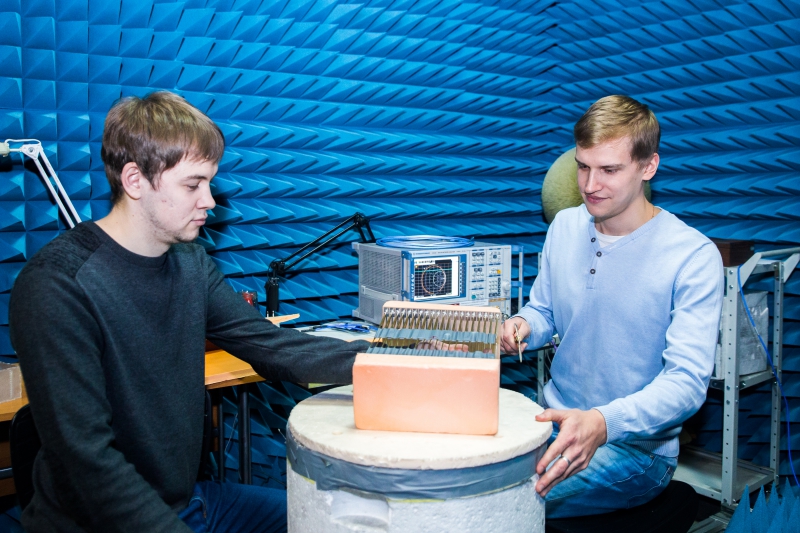
Another important thing about ITMO University is the creative freedom it offers. You don’t feel like just a cog in a machine, forced into a daily routine. There is a lot of creativity and some craziness, but at the same time, you can understand where the university is heading at a large scale. It’s the same at our faculty and our laboratory: we meet every week to discuss our research, to vote and decide on our course, and it feels very open; if you find an interesting opportunity, you can always come forward with it. So there’s this perfect balance between not being too strict and not floating in space without any idea what to do. There are frameworks and general directions, and beyond that, you are free to work as you like.
Have you had a chance to travel here? How does Russia compare to other places you have been to on your extensive travels?
My wife is Russian, so that helps a lot. I visited a lot of Kirovskaya Oblast and been to a number of small towns, which are very different from large cities. I have also visited Nizhny Novgorod in September; it was very sunny and very beautiful. Unfortunately, I think, that is all, but I plan to visit Sochi, Baikal, and maybe even Vladivostok, at some point.
You speak 5 languages: French, English, and Russian I can understand. But how did you come to learn German and Spanish?
In France, every two years in school you have an opportunity to start a new language. At the age of 10, I had the choice of starting with either English or German. For some reason, my father advised me to study German, and I think he was right. His logic was that in two years I will start English anyway, and these two years of it wouldn’t make any tremendous difference, whereas German is a more complex language, so studying it would help me to learn languages better in the future. After that, I started English, and later I had a choice to either start a third language or take on some technical subjects that didn’t sound exciting to me at that time; I needed to choose and I hesitated between Italian and Russian. So once again I asked my parents for advice and their answer was that it is my last chance to take on something like the Russian language, because it is much more difficult the older you get.
When I entered university, they told me that besides physics, maths and all of that, I also have to learn three languages — English, German and Spanish — for my European diploma. I asked them whether I could swap Spanish for Russian, which I had studied before, and they told me no, so I also had to learn Spanish in the end, which I do not regret.
How was Russian taught to you at school?
We had a fantastic teacher. He was French, his wife was Russian, and thanks to him I felt like I knew St. Petersburg before I actually visited it at the age of 22. He was so fascinated with Russia and St. Pete in particular. In all the years that he taught us, I don’t think he spoke all but two hours of French. He just came to us and said “Здравствуйте”, and he repeated it until we realized that it was a greeting and that we had to respond similarly. Very rarely he switched to French to explain some specific grammar, but after that, it was just Russian again. I think, at the end of teaching he was exhausted: when he had to explain the word “корова” (cow) to us, he would just put his hands on the table and moo; he was that enthusiastic about Russian.
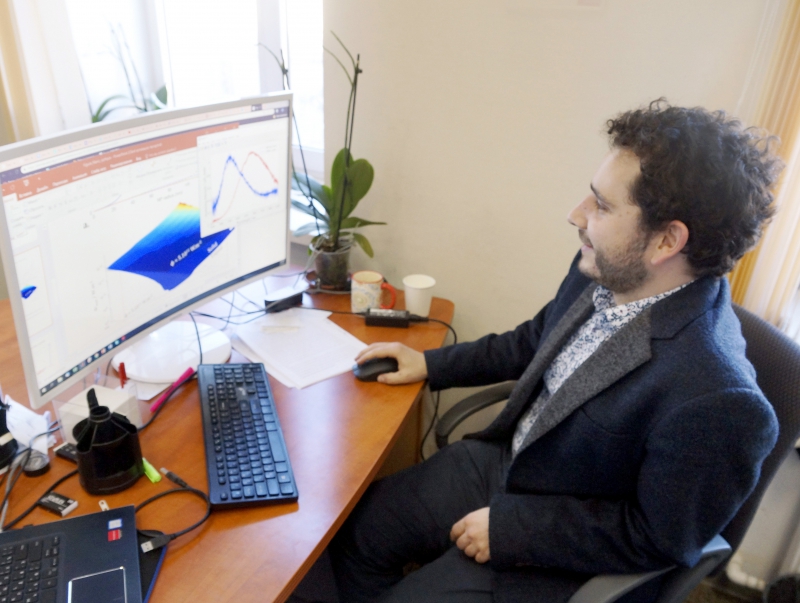
I think having a good teacher is very important because it creates this special relationship between you and the language, which later translates into a special relationship between you and the country when you go there.
Which language is your favorite? Which one do you enjoy speaking the most?
It’s very hard to choose. I find an excellent balance in the triangle of English, French, and Russian. The British have a way of being very careful with words, which leads to it being a great language for speaking about methods. The Russian language is much more emotional, and French is in between them. So I really can’t choose, it strongly depends on my mood. When I’m feeling emotional, I will prefer Russian, of course, but English is very good for explaining things and for science in general.
What are your plans for the future?
I have moved nine times in the past decade, so it is very hard for me to say anything for certain, but right now I like it very much here at ITMO University: our lab has some very promising research, so I really feel like I am at the right place at the right moment in my career. I have had some international experience, and now I am here, with a perfect balance of freedom and pressure. The biggest danger for a young researcher is not knowing which exact field you should work in. You might just look everywhere and in the end find nothing. After you have your PhD, you no longer have your mentor and you have to find a subject yourself, so it is very important to stay creative – and ITMO University is a great place for that.
